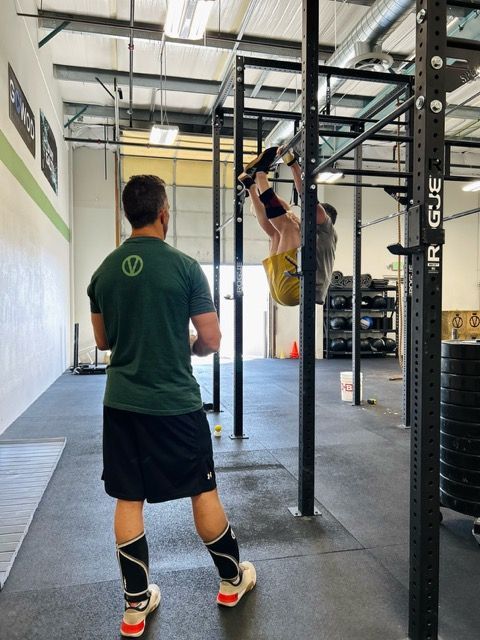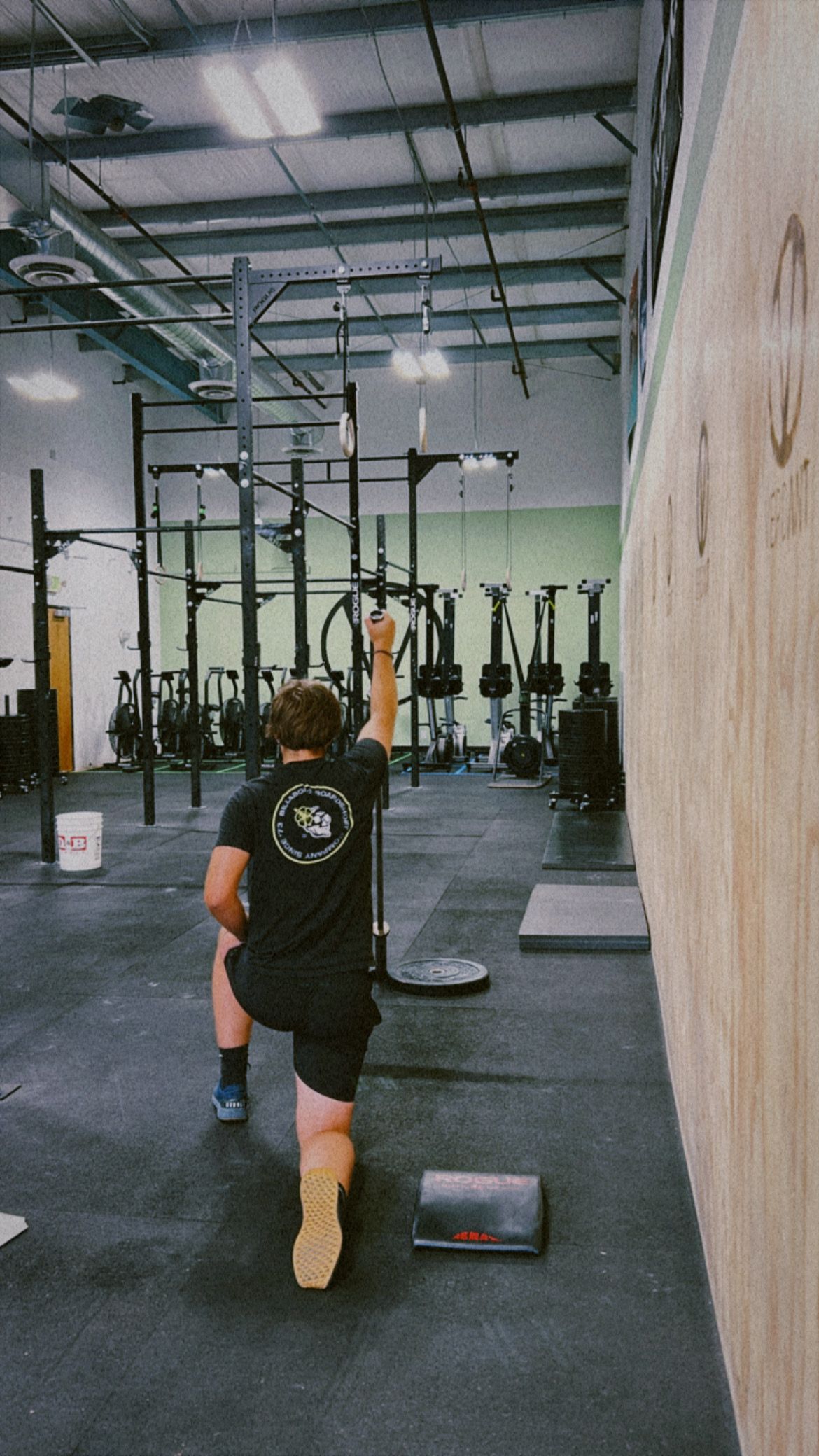Fitness Tips, Insights & More
Blog
Explore our blog posts for tips, insights and more from Verdant's fitness experts.
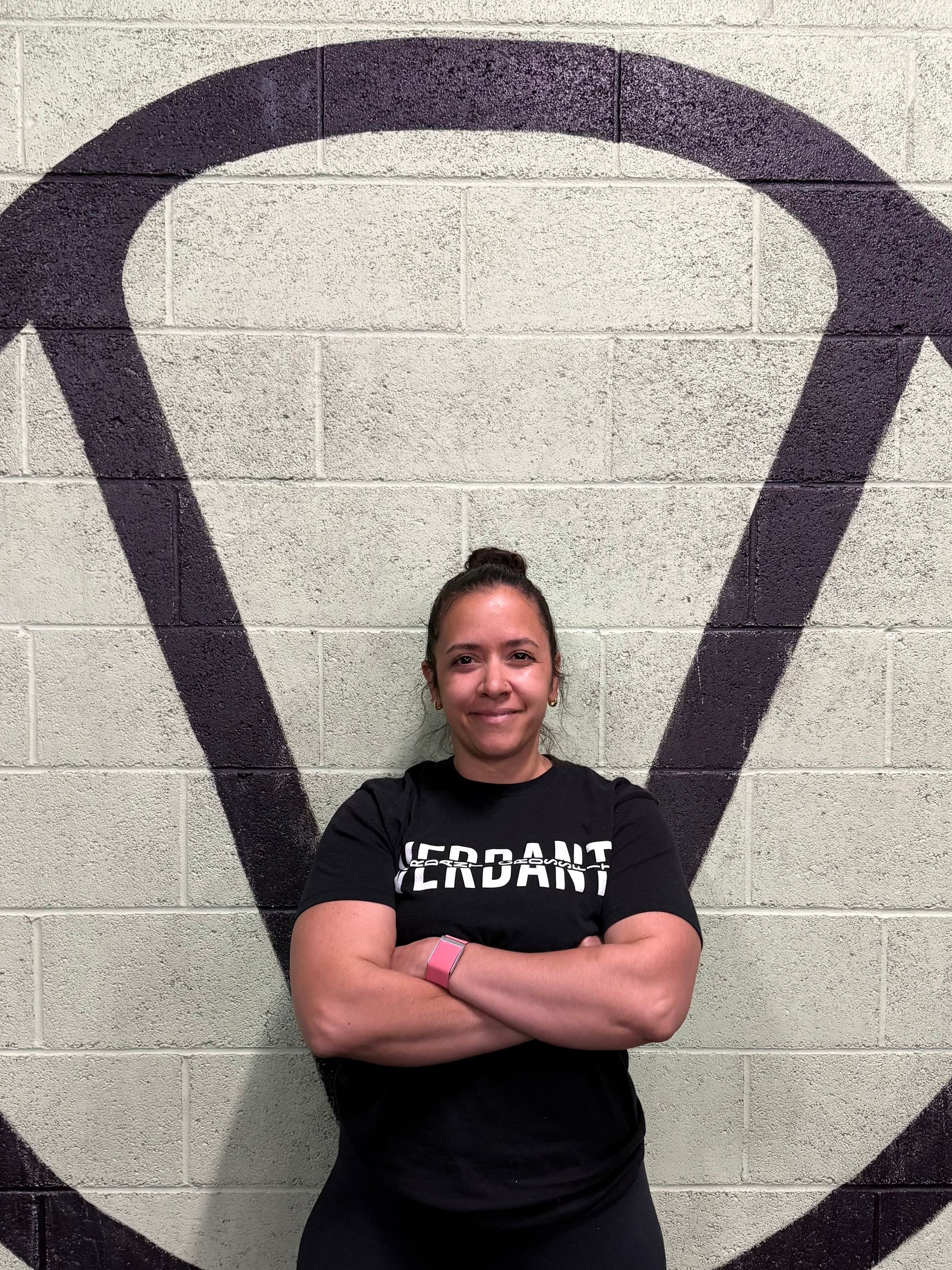
10/28/25 Written by Coach Jasmine Jones I’ve heard the phrase “prepare for the unknown and unknowable” more times than I can count since starting CrossFit. For years, I thought it was just about being ready for whatever wild workout showed up on the whiteboard - the heavy barbell days, the unexpected endurance WODs, or that surprise combo that leaves you lying on the floor questioning your life choices. But somewhere along the way, I realized it’s not just about fitness. It’s about life. CrossFit didn’t just make me physically stronger - it gave me a foundation that helped me handle some of the hardest unknowns life could throw at me. When I was diagnosed with cancer, and later Type 1 diabetes (right in the middle of treatment), that foundation mattered more than ever. I didn’t stop moving. I adapted. I scaled. I showed up in whatever way I could. Because that’s the thing about CrossFit - there’s always something you can do. Movement became my medicine. When everything else felt out of control, moving helped me feel grounded. It helped me manage stress, clear my head, and remind myself that I was still capable. Some days, it was a slow walk or a light row. Other days, it was lifting a barbell with no plates. The point wasn’t the intensity - it was the act of showing up for myself. Illness and injury have a way of forcing you to meet yourself where you’re at. They strip away the ego and make you redefine what “strong” really means. Some days, strong means pushing hard. Other days, it means giving yourself grace and setting a new baseline. CrossFit taught me that both count. I’ve learned that showing up is half of it. Doing the work - whatever version of the work you can do that day - is the other half. It’s okay to scale. It’s okay to take breaks. It’s okay to be in a different season of fitness than you once were. What matters is consistency, not perfection. CrossFit prepares us for life’s hardest workouts - the ones that don’t happen in the gym. The discipline, community, and mindset you build here spill over into everything else. You learn to stay calm under pressure. You learn to push through discomfort. And you learn that you don’t have to do it alone. When I think about my journey - through cancer, through diagnosis, soon through recovery - I realize CrossFit didn’t just make me fit. It made me resilient. It reminded me that even when life changes, I still get to choose how I show up. If you’re going through something hard right now - an injury, illness, or just a tough season - remember this: movement is medicine. Keep moving. Keep showing up. Keep giving yourself grace. You don’t have to be at your best to benefit from movement. You just have to start from where you are. Because that’s what CrossFit - and life - are really about: being ready for the unknown and unknowable, and finding strength you didn’t know you had Jasmine Jones MHS, NBC-HWC, CHES®, CF-L2

Rx Men’s WoD #1 Workout Video 15 Min Time Cap 75 Calorie C2 Bike (Shared) then 50 Synchro Double-Under Partner 1: 30 Calorie C2 Bike Partner 2: 12 Wall Facing Strict Handstand Push-Ups + 10 Handstand Push-Up Partner 2: 30 Calorie C2 Bike Partner 1: 12 Wall Facing Strict Handstand Push-Ups + 10 Handstand Push-Up then 50 Synchro Double-Under Partner 1: 30 Calorie C2 Bike Partner 2: 10 Wall Walk Partner 2: 30 Calorie C2 Bike Partner 1: 10 Wall Walk then 50 Synchro Double-Under 75 Calorie C2 Bike (Shared) Athletes start at their, not on their bike. Anytime athletes are doing jump rope, they are facing the direction they will be going. Reference video in necessary. Both partners will do 30 Calorie Bike only twice Both partners will be on the wall only twice. Both partners will only do 150 double-unders To finish both partners must run to their designated wall section. Only then will time stop. *note that in the video we do not do the first section of 75 calories on the bike. Rx Women’s WoD #1 15 Min Time Cap 60 Calorie C2 Bike (Shared) then 50 Synchro Double-Under Partner 1: 24 Calorie C2 Bike Partner 2: 7 wall walk + 12 Handstand Push-Up Partner 2: 24 Calorie C2 Bike Partner 1: 7 wall walk + 12 Handstand Push-Up then 50 Synchro Double-Under Partner 1: 24 Calorie C2 Bike Partner 2: 7 Wall Walk Partner 2: 24 Calorie C2 Bike Partner 1: 7 Wall Walk then 50 Synchro Double-Under 60 Calorie C2 Bike (Shared) Athletes start at their, not on their bike. Anytime athletes are doing jump rope, they are facing the direction they will be going. Reference video if necessary. Both partners will do 24 Calorie Bike only twice Both partners will be on the wall only twice. Both partners will only do 150 double-unders. To finish, both partners must run to their designated wall section. Only then will time stop. Scaled Workout #1 12 Min Time Cap 50 Calorie C2 Bike (Shared) then 50 Synchro Jump Rope Partner 1: 20/15 Calorie C2 Bike Partner 2: 15 Shoulder Press (75)/15 Push Press (55) Partner 2: 20/15 Calorie C2 Bike Partner 1: 15 Shoulder Press (75)/15 Push Press (55) then 50 Synchro Jump Rope Partner 1: 20/15 Calorie C2 Bike Partner 2: 15 Shoulder Press (75)/15 Push Press (55) Partner 2: 20/15 Calorie C2 Bike Partner 1: 15 Shoulder Press (75)/15 Push Press (55) then 50 Synchro Jump Rope 50 Calorie C2 Bike (Shared) Athletes start at their, not on their bike. Anytime athletes are doing jump rope, they are facing the direction they will be going. Reference video if necessary. Both partners will do Calorie Bike only twice Both partners will be on the barbell only twice. Both partners will only do 150 jump rope. To finish, both partners must run to their designated wall section. Only then will time stop. Rx Workout #2A 5:00 Max Clean and Jerk (total) Bar must start on the ground. Athletes are responsible for changing their own weights. Clips must be used for a rep to count. Athletes must complete the clean before beginning the jerk. Feet must come together, arms must be locked out overhead before the bar is dropped. 5:00 per team, not per athlete. 1:00 Transition Rx Workout #2B 5:00 Max Synchro Toes to Bar Partners start underneath the bar. Four feet must hit at the same time for a rep to count. NOTE for Rx Athletes: There will be ROLLING STARTS for all Rx athletes. In order to ensure all athletes can get on to the Toe-to-Bar area that fits them best, we are going to have only 3 teams on each station at one time. Heat 1 will being the CJ then they will have the 1:00 transition period. During that 1:00 the next teams step onto the floor and start their clean and jerk at the designated time. Scaled Workout #2A 5:00 Max Clean (any style) (total) Bar must start on the ground. Athletes are responsible for changing their own weights. Clips must be used for a rep to count. Athletes must complete the clean before dropping the bar to the ground. 5:00 per team, not per athlete. 1:00 Transition Scaled Workout #2B 5:00 Max Hanging Knee Raise (one person at a time) Rep is counted when the knee passes the hip crease. Strict or kipping is allowed. Non working partners must remain behind their working partner for safety. Rx Men’s Workout #3 Workout Video 14 Time Cap 12 - 9 - 6 - 3 Worm Clean Right Worm Clean Left Thrusters Then 100’ Lunges to finish Athletes will begin next to their worm. Athletes will complete all 12 reps on the right side, then all 12 reps on the left side, then 12 thrusters. If the worm is dropped athletes may begin thrusters on any side they choose. After teams finish their 3rd thruster they may begin their lunges. Lunges are counted when both partners’ knees hit the ground and both partners fully stand up. Teams that shuffle between reps will be told to retreat 5’. Both athletes must pass the 25’ mark for the rep to be complete. 100’ lunge sections must be done in 25’ sections. Worms must always be positioned parallel to the lane that they team is in. Teams may drop the bar or roll the bag over their shoulders to do the lunging unbroken, they may not helicopter the bag around. Rx Women’s Workout #3 Workout Video 14 Min Time Cap 9 - 6 - 3 Worm Clean Right Worm Clean Left Thrusters Then 100’ Lunges to finish Athletes will begin next to their worm. Athletes will complete all 9 reps on the right side, then all 9 reps on the left side, then 9 thrusters. If the worm is dropped athletes may begin thrusters on any side they choose. After teams finish their 3rd thruster they may begin their lunges. Lunges are counted when both partners’ knees hit the ground and both partners fully stand up. Teams that shuffle between reps will be told to retreat 5’. Both athletes must pass the 25’ mark for the rep to be complete. 100’ lunge sections must be done in 25’ sections. Worms must always be positioned parallel to the lane that the team is in. Teams may drop the bar or roll the bag over their shoulders to do the lunging unbroken, they may not helicopter the bag around. Scaled Workout #3 12 - 9 - 6 - 3 Synchro Barbell Power Clean 95/65 Synchro Thruster Synchro Burpee Over Barbell Power Clean reps must be started on the ground at the same time and the rep is credited when the bar is on the front rack of both athletes at the same time. If one teammate fails, the other teammate may maintain the front rack position without redoing their rep. Thruster reps are credited when both athletes hit depth and both athletes lockout finish overhead. The burpee is not a bar facing burpee. Athletes may jump or step over the bar. Chests must hit the ground at the same time and be on the ground at the same time before an athlete leaves the ground.
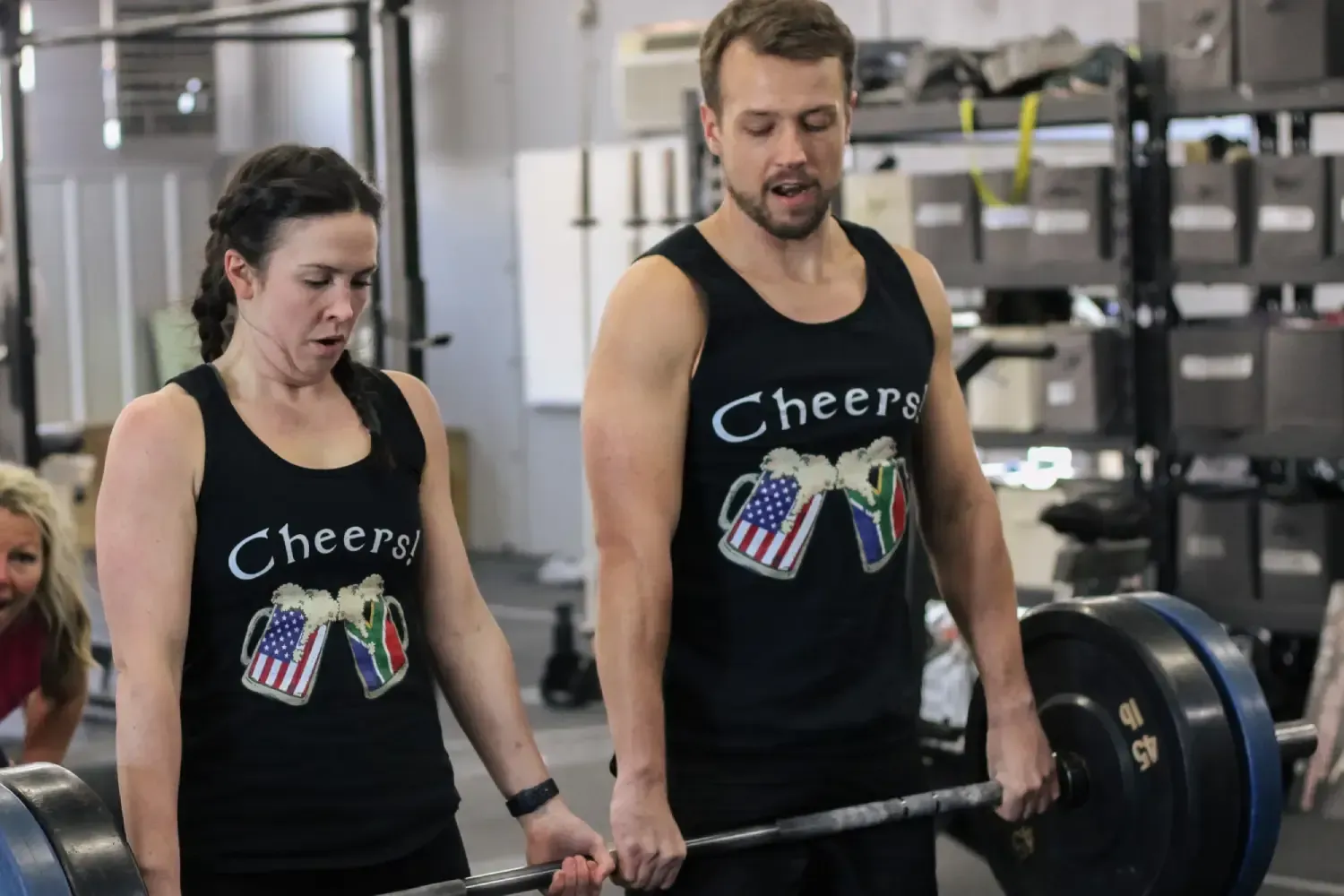
What is the “product” of a CrossFit gym? It’s an interesting and essential question—one that many gym owners and members alike misunderstand. The instinctive answer is often simple: the product is the workout. After all, members show up to sweat, lift, and breathe hard. But any gym can program workouts, and a great many do. The truth is that the “product” of a true CrossFit affiliate—the thing that separates a thriving organization like Verdant CrossFit from a generic fitness facility—is not just the coaching, nor the programming, nor the community. It is the seamless synthesis of all three. To begin with, the coaching is the most visible layer of the product. Coaching is the moment-to-moment delivery of the gym’s values, standards, and knowledge. A coach translates complex movement patterns into actionable cues, fosters an environment of focus and accountability, and ensures that every athlete, from the beginner to the regional competitor, receives both correction and encouragement. Without great coaching, the methodology is merely theoretical. The effectiveness of CrossFit programming—the elegant combination of constantly varied, functional movements executed at high intensity—depends entirely on how well it is taught and received. Coaching is the interface between the athlete and the method. Yet even world-class coaching cannot exist in a vacuum. The programming provides the structure and direction that elevate effort into progress. Well-designed programming embodies a philosophy; it is the long-term blueprint that determines how athletes evolve. At Verdant CrossFit, programming is developed internally, ensuring it reflects not only the principles of CrossFit but also the unique standards and expectations of our organization. This kind of thoughtful programming allows athletes to build capacity systematically across modalities—strength, endurance, skill, and power—rather than simply chasing exhaustion. Programming, in other words, is the architecture of progress. Then there is the community—the most intangible but perhaps most critical component of the product. CrossFit is done in groups for a reason. The shared experience of challenge and achievement binds people together, creating an atmosphere of accountability and support that no solo workout can replicate. The community amplifies effort, sustains consistency, and fosters identity. But the community does not happen by accident. It is cultivated through intentional leadership, shared standards, and the consistent example set by coaches and athletes alike. When these three elements—coaching, programming, and community—align, they produce something far greater than the sum of their parts. That synergy is the true product of a CrossFit gym. It is not a tangible object; it’s an experience, a process, and an environment that consistently produces better humans—stronger, more disciplined, more resilient. And therein lies the challenge of replication. To build one great CrossFit gym is difficult enough. To build multiple gyms that each maintain the same depth of coaching, the same programming integrity, and the same cultural cohesion is exponentially harder. Each location must operate with autonomy while reflecting a unified philosophy. The product, then, is not merely what happens inside the four walls of a single gym—it’s the culture and system that make those walls meaningful. It’s a living ecosystem of people, ideas, and practices that must be built deliberately, protected fiercely, and led relentlessly. That is why, at Verdant CrossFit, the product is not a class, a workout, or a program. It’s the entire experience—the convergence of coaching, programming, and community into something that transforms lives and stands the test of time.
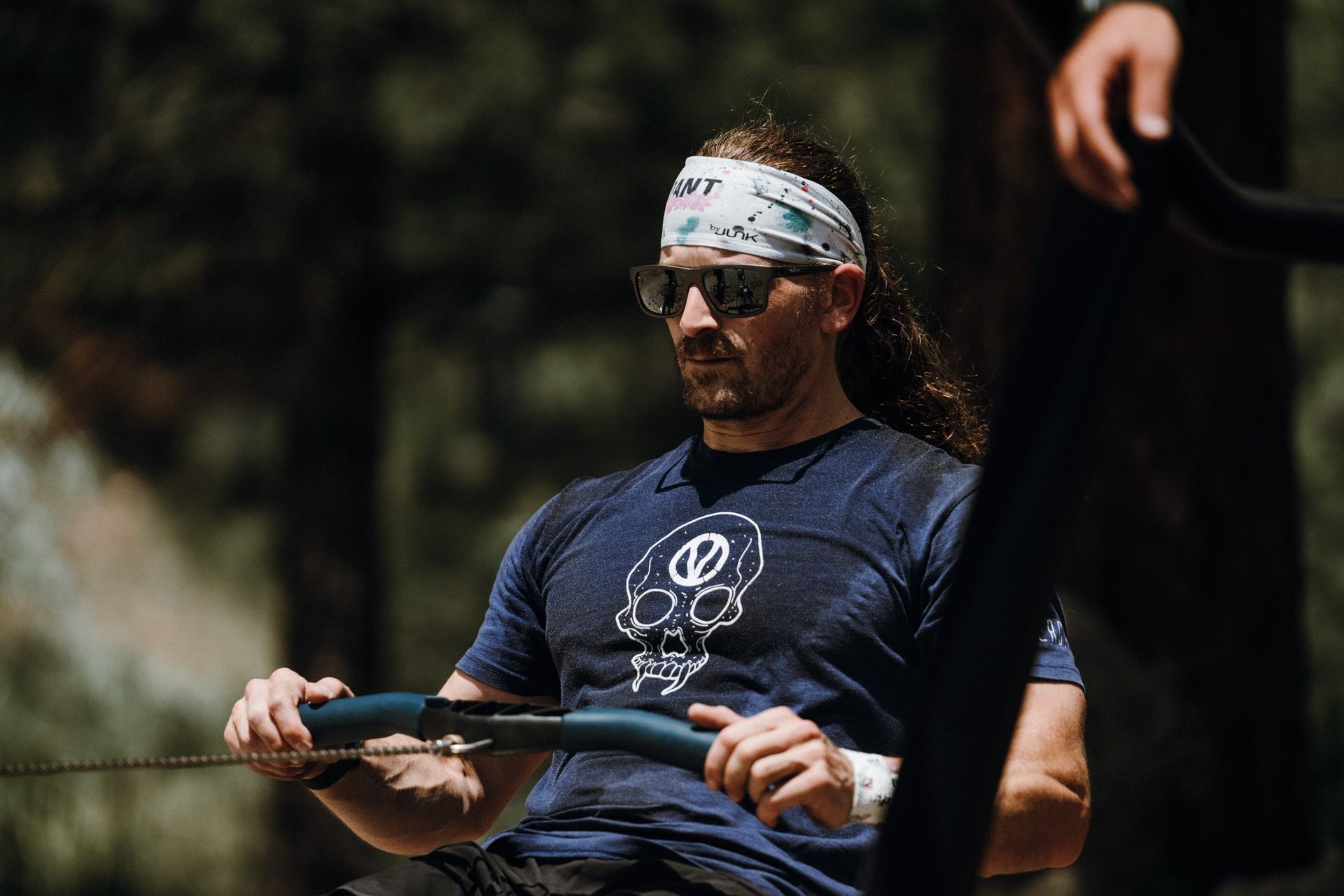
CrossFit is not a casual endeavor. Its effectiveness lies in its structure, in its commitment to consistency, and in the deliberate variation that defines its methodology. CrossFit is built on the idea of constant variance across time domains and modalities—training that challenges strength, endurance, speed, agility, coordination, and power in a balanced, ever-evolving way. When performed regularly, this blend of intensity and diversity develops unparalleled fitness. But when approached sporadically—three to five sessions a month—the system loses its potency entirely. CrossFit is designed to function as a whole, not as a sampler. Its genius lies in the interplay of different workouts, energy systems, and skill progressions that build upon one another. Each week of training is part of a larger framework—a carefully constructed rhythm of effort and recovery that drives adaptation. Missing that rhythm breaks the pattern, dulls the response, and leaves the athlete stranded at the surface. Sporadic participation gives a taste of the physical demand but none of the transformation. Those who treat CrossFit as a drop-in experience may believe they are engaging with the program, but in truth, they are only brushing against its outer layer. The real benefit—the measurable increase in work capacity across broad time and modal domains—comes only through consistency. The body learns through repetition and exposure; the nervous system adapts through frequency. The “trick,” as CrossFit founder Greg Glassman once implied, is that the magic of the program is not in any one workout, but in their accumulation over time. CrossFit rewards commitment. It is for those who show up, who build habits, who allow the methodology to shape their capacity and understanding. Done half-heartedly, it becomes random exercise. Done consistently, it becomes transformative. The difference between the two is not intensity—it is devotion.

At Verdant CrossFit, the programming is entirely internal—crafted, tested, and refined within the walls of the gym. Whether it is daily CrossFit classes, Everyday CrossFit, the focused sessions of Barbell Club, competitive tracks designed for athletes pursuing higher-level performance, or skill-intensive gymnastics development, every training plan originates from within. This approach reflects the philosophy of owner and head coach Basile, who believes that true programming should emerge from firsthand knowledge of the athletes, their needs, and the culture of the gym. Basile has always been fully committed to CrossFit—not partially, not as a secondary pursuit, but wholly. For him, this is not a side business or a supplemental career. CrossFit is his vocation, and he treats it with a seriousness that is uncommon in the broader affiliate community. While many gym owners balance outside careers or rely on generalized programming provided by others, Basile has made Verdant CrossFit his singular professional focus. This complete immersion allows him to devote his full attention to the continual refinement of training systems and to the progress of the athletes he coaches. The result is programming that is not only intentional but also responsive. Because Basile is present on the floor every day, observing how athletes move and adapt, he is able to make adjustments that align with the reality of training rather than abstract theory. The programming for Barbell Club emphasizes technical precision and strength development; the competitive track blends conditioning with strategy for higher-level sport; gymnastics sessions develop body control and movement quality; and the general CrossFit classes are structured to build capacity across all fitness domains without neglecting fundamentals. Few gyms can offer this level of cohesion across disciplines, because few owners commit themselves so completely. At Verdant, the programming is not generic—it is alive, evolving, and rooted in the genuine care of a coach who has made CrossFit his life’s work. This is what sets Verdant apart and sustains the culture of excellence its athletes have come to expect.
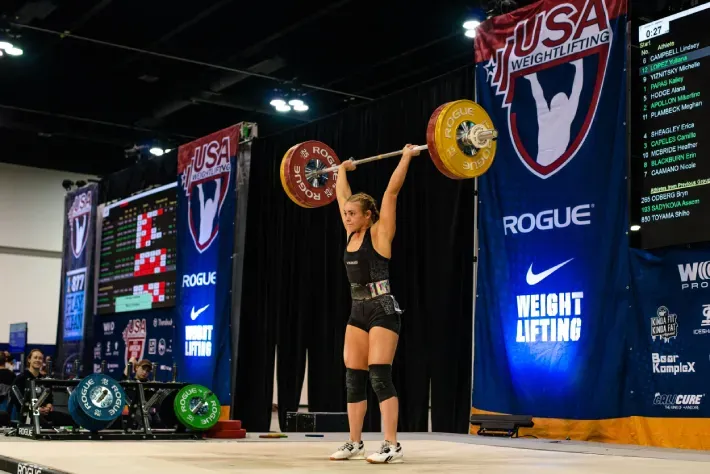
Verdant CrossFit and the Olympic Lifting Methodology Olympic lifting is one of the purest expressions of human strength and athleticism. The snatch and the clean and jerk demand an intricate balance of speed, coordination, precision, and raw power. Within CrossFit, they often serve as a dividing line between athletes who have mastered the barbell and those who remain intimidated by it. To watch a technically sound snatch is to witness an athlete achieve both grace and explosiveness, a rare harmony in sport. At Verdant CrossFit, Olympic lifting has become a hallmark of success, largely due to the distinct approach of owner and head coach Basile. His philosophy, shaped in part by his experiences studying in Russia, diverges from conventional coaching models and has produced results that speak for themselves. Basile’s path into Olympic lifting was anything but ordinary. Basile traveled to Russia, immersing himself in a system renowned for producing some of the world’s most technically efficient lifters. The Russian tradition placed enormous value on rhythm, timing, and the seamless connection between lifter and barbell. Rather than breaking movements into endless stages, the emphasis was on cultivating an instinctive, natural feel for the lifts. That experience left a lasting impression on Basile, reshaping how he would later coach athletes at Verdant. When he returned home, he carried with him a conviction that Olympic lifting had been overcomplicated in much of the CrossFit and American weightlifting community. The constant focus on terminology—the so-called “first pull,” “second pull,” and “third pull”—created lifters who thought too much and moved too little. For Basile, the beauty of the snatch lies in its unity: one fluid motion in which the athlete extends violently yet gracefully, guiding the barbell overhead without interruption. The language of “pulls,” in his view, has led to generations of athletes with compromised technique. When lifters are taught to anticipate distinct checkpoints within the movement, they often hesitate, pull with their arms too early, or disrupt the natural bar path. Instead of moving fluidly, they attempt to stitch together a series of segmented actions, resulting in lifts that look mechanical and lack rhythm. The pull system may have produced strong athletes in the past, but it has also hindered countless others, particularly within CrossFit, where athletes juggle dozens of movements and cannot afford to become paralyzed by complexity. Basile does not completely discard the concept of pulls, but he treats it as a tool of last resort. When an athlete requires a very specific corrective cue, he may briefly reference one of the pulls. Yet he never builds an athlete’s foundation on that framework. Instead, he emphasizes extension as the centerpiece of the snatch. The barbell and the body must rise together in one continuous motion, with the lifter finishing tall and fast before moving under the bar. The snatch, in his teaching, is more akin to music or dance than to a mechanical checklist. Timing, speed, and rhythm are inseparable. This philosophy has defined the culture of Olympic lifting at Verdant CrossFit. Athletes quickly come to understand that they are not expected to memorize technical jargon or recite phases of a lift. They are expected to move, to feel, and to develop a relationship with the barbell that transcends overthinking. For many, this is a liberating shift. The snatch transforms from a source of confusion into a movement that becomes natural, even enjoyable. Importantly, the way Olympic lifting is taught at Verdant varies depending on the goals of the athlete. Those who attend barbell club receive highly specific, detail-oriented training. Their sessions involve intentional technical drills, careful corrections, and progressions designed to refine every nuance of the snatch and clean and jerk. These athletes are often seeking mastery, and Basile provides the environment and coaching precision necessary to pursue it. The focus is on continual refinement, making even the smallest improvements in timing, speed, and bar path. For athletes whose primary focus is CrossFit workouts rather than competitive weightlifting, the coaching is adjusted accordingly. These individuals still learn the same principles of extension, rhythm, and flow, but their instruction is less granular. They are taught to lift safely and efficiently in a way that supports the demands of CrossFit: repeated lifts under fatigue, the integration of Olympic lifting into workouts, and the need for competency across multiple domains. In this context, it would be counterproductive to bog athletes down with endless technical details. Instead, they are given the clarity they need to perform confidently without sacrificing the broader scope of their training. This distinction between barbell club and general CrossFit programming reflects one of Basile’s core beliefs: coaching must be athlete-specific. There is no single script that applies equally to all. A competitive barbell athlete requires exactness, while a CrossFitter benefits from simplicity. Yet in both cases, the underlying philosophy remains the same: do not overcomplicate the lift. Focus on extension, timing, and trust in the body’s ability to move naturally. The results of this approach have been undeniable. Verdant athletes regularly demonstrate lifts that are fluid, fast, and efficient. Their movement often stands out in competition settings, where others appear rigid or hesitant. The natural rhythm cultivated in Verdant’s program is apparent not only to coaches but also to spectators, who often remark on the ease with which Verdant lifters move heavy weight. Many athletes who once struggled with Olympic lifting elsewhere have experienced breakthroughs after joining Verdant, crediting Basile’s philosophy with helping them “unlearn” habits that had held them back for years. Looking ahead, Olympic lifting will continue to serve as a defining strength of Verdant CrossFit. Basile’s roots in the Russian tradition remain strong, but he consistently adapts his approach to meet the evolving needs of his athletes. He views coaching as a living practice, one that must change with the athlete rather than remain bound by rigid dogma. What will not change, however, is his conviction that the snatch should be taught as a fluid, unified extension, free from the clutter of excessive segmentation.
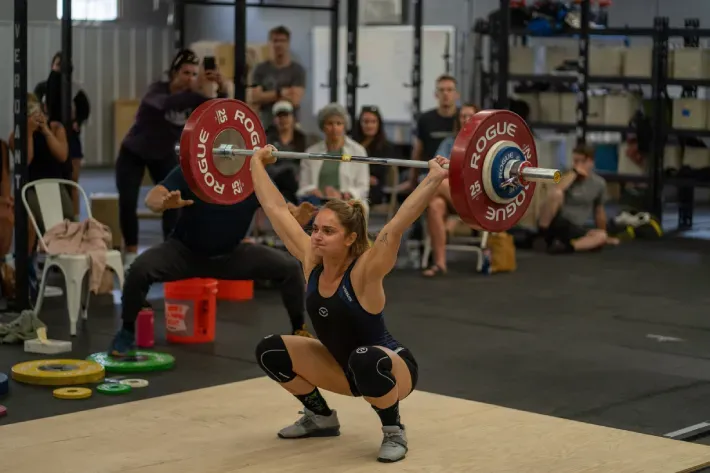
Written by Coach Cassie. Coach Cassie has been at Verdant CrossFit for 10 years. She is one of 3 CCFT - L3 coaches on staff. 8/13/25 As coaches we have two primary jobs (besides doing the laundry). The first is to keep you safe. The second is to make sure you're progressing. How we cue you in class, the directions we give are an essential aspect of how you improve. What's most important about this fact is understanding that it is the little things that turn into big things. Learning to do CrossFit well is a little like learning math. You start out with learning numbers, then learning to add and subtract, then multiplication and division, then fractions and percentages, then formulas, factorials, and harder shit that I never really figured out. If you have a gap in any of these skills, it makes for a very unstable infrastructure that will lead to an inability to progress. (I was an English major for a reason, friends.) In CrossFit, we also start out with basics. As a CrossFit coach, I also find that those who have gaps in foundational movements struggle to progress. Take for example the arch to hollow. There's a reason we do it before we do any kind of pull-up, toes-to-bar, or muscle-up: because it is foundational to these more complex movements. Your ability to find a proper arch and a proper hollow position is how you get good at toes-to-bar and how you finally get that bar muscle-up (and then string them together). This is of course we have the requisite strength to hang from the bar etc. Moving from an arch to a hollow without bending at the knee, hip, or elbow provides the kinetic energy necessary to help you pull yourself up. The longer and straighter you can hold your body, the greater the tension. Tension and rigidity are necessary for power as well as finding the feeling of weightlessness. If you want a personal anecdote: Nobody ever taught me how to do a muscle-up. I taught myself in 2013. (I was very proud of them, even if I cringe when I watch videos of myself doing them now.) After I had my first kid, they completely went away and I had to re-learn how to do them. I spent a lot of time on drills perfecting the shapes and building the strength to do them correctly. Today, I can do many, many more than I could back then and do them much more efficiently. This has nothing at all to do with my "fitness," and everything to do with me understanding the positions and learning how to maintain them through the movement, (or it could have been Basile yelling at me until I figured it out.) "Basics are hard." Now, all of this is not to say that the basics are easy. Basics are hard. Getting your core to do what it needs to do in a hollow and having the shoulder mobility to do an arch correctly are both wonderfully difficult. But the basics are how you get good. And every coach in the gym is going to harp on you to do the little things right because doing the little things is the ONLY way you will get stronger, better, faster and eventually able to do the big things. That's why each progression begins with stance and grip. If those are wrong, nothing that we do is going to correct the movement. Even if you have a muscle-up, or a butterfly pull-up, I promise that improving your shapes and doing the little things right will only make the movements easier and more efficient. Love, Coach Cass
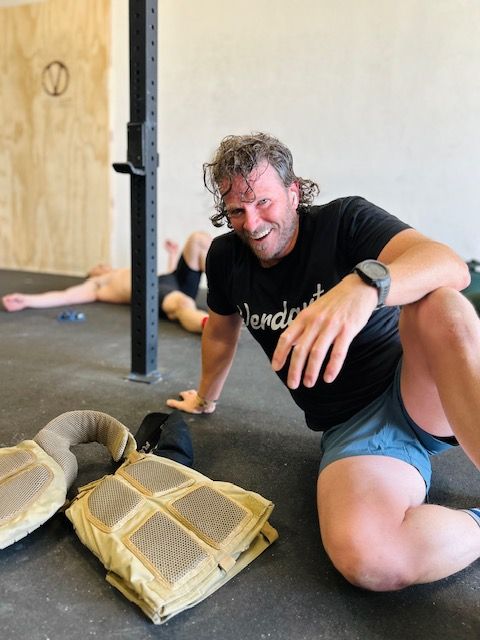
Basile Beaty University of Southern California Kokoro 30 After two weeks there are still several aspects of the Sealfit Kokoro experience that I still cannot quite reconcile. And to some extent I believe that inexplicability is one of the takeaways from Kokoro. I am still surprised that I was able to sprint all-out and uphill multiple times on the third day. I haven’t lengthened my stride out to a sprint since college. The second part of that particular exercise that is honestly more surprising is that I found myself engaging emotionally with the requirements of the program. I wanted to “put out” and to show Chris Smith on the running evolution that I was the best runner in the class. To be honest, I haven’t looked up to anyone since my early years in college much less felt the desire to impress a superior or peer. Usually the knowledge that I am either better educated or more mentally tough is enough for me, but after only two days I wanted to prove myself to the men leading the camp. At the outset of the camp I felt a greater sense of camaraderie to the other Kokoro 30 participants and felt a bridge between the participants and the instructors. I listened carefully to accents, logged ungrammaticalities, and watched movement patterns in the same way that I normally do everyday. What I didn’t know or necessarily trust was that all the instructors were there to build us up in some very nuanced and simultaneously monumental way. After a day of no sleep and pushing through the mental boundaries trapping physical potential I discarded the normal suppositions I make about people via their language and body type. I began to see the instructors completely differently and accepted their role as leaders of our group. It was hard for me to integrate the notion that there are people who are concurrently the demolishers and rebuilders of one’s mind and that you are letting them remake you. In Russian the phrase would be “Я весь переменился” (Ia ves’ pereminilsia; I am wholly changed/remade), it is hard to translate as the root of the verb lies in the verb to change but the prefix denotes transience, thereby implying a shift physically and mentally. As soon as I understood the symbiotic and ultimately organic relationship between participant and instructor I wanted to prove myself in a way that I have never experienced previously. The second major aspect of my experience that took me by surprise was my own ability to conquer my greatest fear. I have stayed away from water my whole life; I have been six percent body fat or less my entire life because of wrestling and as a result I have avoided swimming and cold, wet activities. I grew up in Boston and lived in Siberia and I know how to handle dry cold, but being wet and cold is something that scares me and that I am not quite sure how to handle. I did my best on the two minute pushup contest at the Crossfit Games in order to win an entry to Kokoro because I knew it was going to involve water. I wanted to see how I would do against something I am afraid of. After the first few hours the surf zone was no longer a fear. The ice baths were a different story. I found that I couldn’t control my breathing properly with water poured over my head in the ice bath and it made the experience significantly harder. I also found that my muscles took a while to respond after being in the ice baths, though that may have had to do more with the sudden decrease in movement. I left Kokoro feeling like I had conquered a fear of water and cold, but I know that I need to continue putting myself in those conditions in order to maintain that gain. I took about seven days off after Kokoro, only doing light active recovery because my ankles were swollen to twice their normal size. Earlier today I did three Crossfit WODs and I found myself remembering Kokoro and that the muscle burn that I have experienced for years can be overcome via different breathing techniques and mental focus. I have always prided myself on doing well as an athlete despite a number of physical disadvantages, but I think that I am about to find a whole new level of success. Kokoro was the hardest thing that I have ever done and it has the makings to be the most rewarding thing that I have ever accomplished as soon as my ankles start working again.
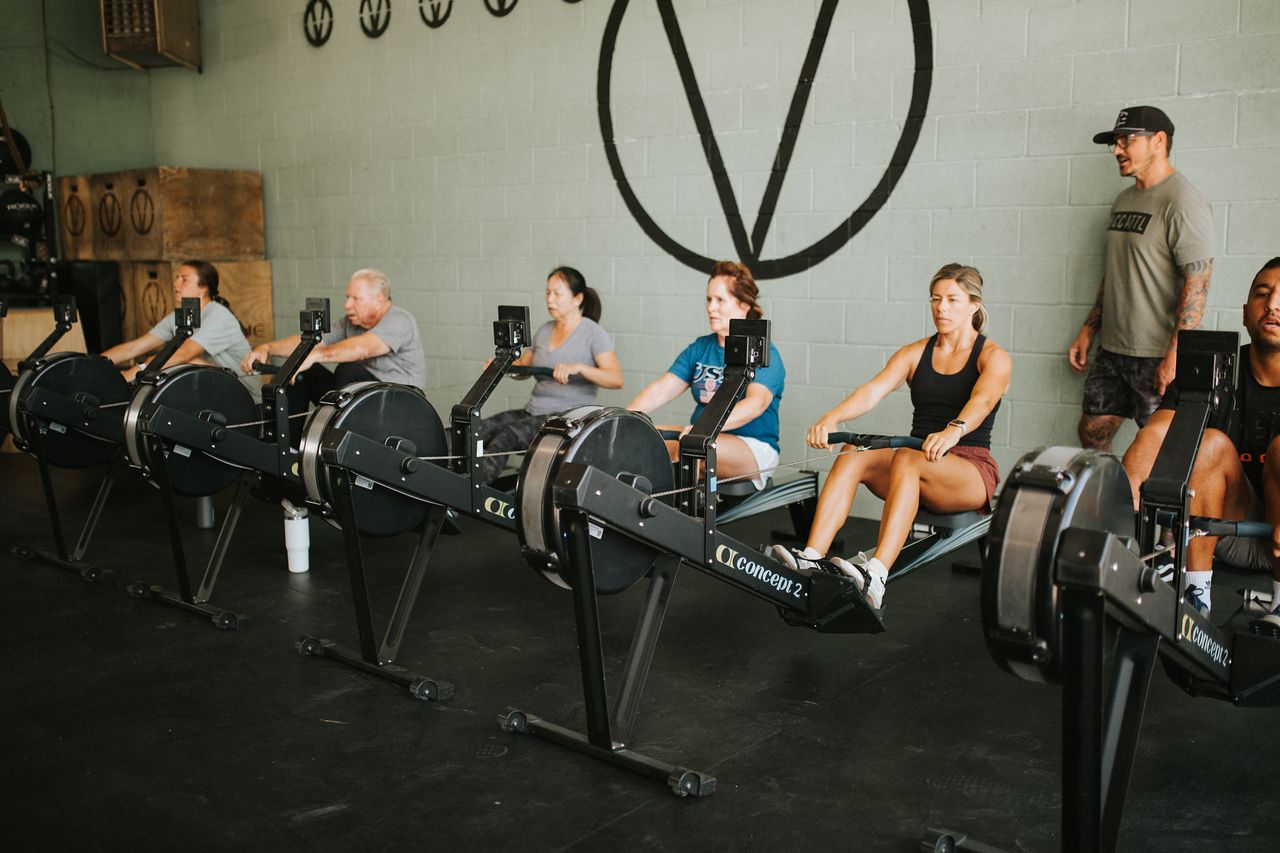
The Truth About CrossFit Affiliates: Independently Owned Small Businesses at the Core of the CrossFit Movement When people hear the word "CrossFit," they often picture high-intensity workouts, community-driven fitness events, and perhaps even the spectacle of the CrossFit Games. What many do not realize, however, is that the vast majority of CrossFit gyms—also known as CrossFit affiliates—are not owned by a centralized corporate entity. In fact, CrossFit’s affiliate model is unique within the fitness industry precisely because it prioritizes independence, entrepreneurship, and local ownership over corporate control. This article will explore what it truly means to be a CrossFit affiliate, why these gyms are not part of a traditional franchise system, and how the decentralized nature of CrossFit supports small business ownership and local community building. We'll debunk the common misconception that CrossFit affiliates are part of a revenue-sharing empire or beholden to a larger corporate chain, and shed light on the foundational principles that make the affiliate model one of the most grassroots and empowering structures in the fitness world today. The Affiliate Model: Independence by Design Before we get much further into CrossFit as a small business, it’s probably important to establish some BASIC pieces of what makes a CrossFit affiliate. CrossFit is not a franchise. It is a brand that offers an affiliate model—an approach that has more in common with independent artisan coffee shops than it does with global gym chains. To become an affiliate, an individual must meet a few basic requirements: Complete the Level 2 Certificate Course , which ensures that the affiliate owner has a foundational understanding of CrossFit methodology and can coach others safely and effectively. Apply to use the CrossFit name by submitting an application that includes a business plan, a location, and a statement of intent. Pay an annual licensing fee , which grants the business the right to use the "CrossFit" name in their branding. That’s it. There are no demands for profit-sharing. No royalties. No rigid operational mandates. Once an affiliate is approved, they operate entirely on their own terms. They choose their own pricing, programming, marketing strategy, coaching staff, facility layout, and member engagement model. They own their business. This degree of freedom is rare in the fitness industry. Franchise models such as those employed by Orangetheory Fitness, F45, and Planet Fitness involve detailed and sometimes intrusive controls on how a gym is run, often down to brand aesthetics, music playlists, and approved equipment suppliers. Those businesses are answerable to a parent corporation that typically takes a percentage of monthly revenue and exerts oversight into every facet of operations. By contrast, a CrossFit affiliate is a business that exists independently. CrossFit LLC does not take a percentage of revenue, does not own any portion of the affiliate’s assets, and has no authority over how the affiliate chooses to structure its business or serve its community. This is not a technicality—it is a deliberate choice built into the DNA of the CrossFit movement from the beginning. As a business owner, the looseness of CrossFit’s model is both a boon and a curse. A lot of people who are new to CrossFit usually think that a CrossFit membership at CrossFit Blue is also a membership at CrossFit Red. No Revenue Sharing, No Market Carving Because CrossFit does not participate in the revenue generated by its affiliates, there is no incentive for the parent company to “extract value” from them. The $4,500 annual fee (as of 2025) to license the CrossFit name is the only financial transaction between CrossFit LLC and the affiliate. The affiliate keeps every other dollar it earns. There are no profit-based royalties, no tiered marketing assessments, and no shared gross revenue pools. Affiliates are not required to report their earnings to CrossFit. This allows owners to reinvest profits back into their gyms—hiring coaches, improving facilities, offering member benefits—without being siphoned by a distant corporate entity. These are some of the more positive aspects of affiliate ownership. On the other side of the coin, CrossFit does not create protected markets or enforce territorial boundaries. In a franchise system, a corporate headquarters typically grants geographic exclusivity to franchisees to prevent competition within the brand. Not so with CrossFit. Multiple affiliates may operate in close proximity to one another, and each one is free to innovate, differentiate, and cultivate their own unique culture. This lack of market segmentation might seem counterintuitive at first, but it fosters diversity, innovation, and quality through natural selection. Since no affiliate can rely on brand exclusivity, they must deliver an exceptional experience to retain members. The result is a landscape of varied and passionate small businesses, each putting its own spin on CrossFit’s core methodology. Small Business at the Heart of Every Affiliate Each CrossFit affiliate is a reflection of the person or team behind it. The owner is often the head coach, community leader, janitor, and business strategist all in one. They are on the floor coaching classes at 6:00 a.m., answering emails between sets, and updating the whiteboard for the next day's WOD. The CrossFit affiliate model enables—and demands—entrepreneurial effort, creative problem-solving, and direct human connection. Most affiliate owners are not investors or corporate entities. They are former athletes, military veterans, parents, healthcare professionals, or fitness enthusiasts who found meaning in CrossFit and wanted to share it with others. They put their own capital on the line, sign their own leases, and build their communities one athlete at a time. This is “small business” in the truest sense. CrossFit affiliates (in general) are not beholden to shareholders, venture capitalists, or public earnings reports. Their success depends not on branding alone but on service, trust, and consistent value. The community aspect of CrossFit—the camaraderie, accountability, and shared struggle—is forged precisely because the people running the gym live and breathe that community alongside their members. Local Impact, Global Movement The paradox of the CrossFit affiliate model is that while each gym is independent and locally operated, the global CrossFit movement is stronger than ever. More than 12,000 affiliates worldwide serve hundreds of thousands of members, yet no two gyms are identical. The programming at a CrossFit box in Cape Town may differ significantly from one in Boston, but both are tethered to the same foundational principles: constantly varied functional movement performed at high intensity, scalable to any level of fitness. This diversity is a strength. It allows each affiliate to serve the specific needs of its community, whether that's competitive athletes, elderly populations, first responders, or complete beginners. An affiliate in a rural town might run a hybrid fitness and social club, while one in a dense urban center might focus on high-performance training for working professionals. The point is: each gym decides what matters to its people. CrossFit’s global footprint is the sum of thousands of micro-communities, each run by an owner who is personally invested—financially, emotionally, and physically—in the health and well-being of their members. This hyper-local focus yields trust, accountability, and longevity in a way that top-down, corporate gym models simply cannot replicate. Innovation from the Ground Up Another powerful benefit of the affiliate model is innovation. Since CrossFit HQ does not impose a singular way of doing things, affiliates are free to experiment. Whether that means running nutrition challenges, hosting local competitions, partnering with schools or health clinics, or adopting new technology to enhance coaching, affiliates are often on the leading edge of fitness experimentation. Some of CrossFit’s most successful movements and ideas originated not from headquarters but from individual affiliates. Concepts such as kids' programs, adaptive athlete training, and community fundraising WODs (like “Murph” on Memorial Day) have all grown organically from the affiliate base. Rather than suppressing innovation in the name of brand uniformity, the CrossFit model encourages it. When one affiliate develops a best practice, others often adopt it—not because they are required to, but because it works. In this way, the CrossFit community functions as a decentralized network of ideas, empowered by the autonomy of its individual nodes. A Different Kind of Fitness Economy In a world where big-box gyms often treat members like commodities and owners like franchise operators, CrossFit’s affiliate model offers something profoundly different: a grassroots, human-centered approach to fitness. Each gym is a small business serving real people. Each owner is a leader, a risk-taker, and a contributor to the health of their community. There is no CrossFit “market share” to be claimed by a corporate boardroom. There are only individual affiliates doing the daily work of coaching, encouraging, and transforming lives. While the CrossFit brand provides legitimacy, visibility, and a shared language, the affiliate model ensures that power and ownership remain in the hands of those who earned it. This is a rare and principled stance in an industry that often trends toward consolidation, franchising, and control. In Summary: The Power of Independence CrossFit affiliates are not corporate franchises. They are independently owned and operated small businesses. There is no revenue sharing. There are no enforced territories. There is no central control over programming, pricing, or operations. What unites these gyms is a shared commitment to improving lives through functional fitness—and the belief that entrepreneurship and community are better drivers of success than bureaucracy and uniformity. For prospective members, understanding this truth can change how they view their local gym. They aren’t walking into a branch of a massive fitness conglomerate—they’re stepping into someone’s dream, someone’s life work, someone’s purpose. For affiliate owners and coaches, this model offers the opportunity to build something real and lasting, something that reflects their values and serves their community on a human scale. CrossFit doesn’t own its affiliates. And that’s exactly why they thrive.
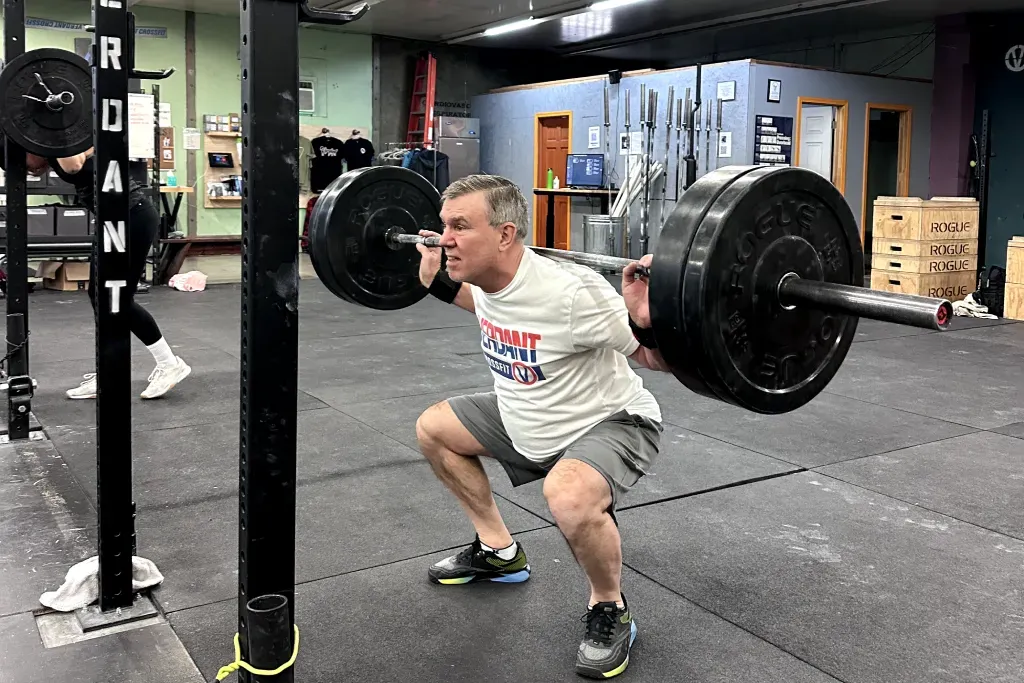
For those of you who have been here this won’t seem at all like a hot take, but I REALLY dislike social media. There are a lot of reasons but I’ve found that what bothers me most is that it cheapens thought and it puts a premium on volume over quality. If every post has an inspirational quote there’s a very good chance that the poster is in danger of creating an ideological oxymoron or just having a completely unclear message. Posting recycled garbage on an instagram feed goes against anything that we teach teens in high school or young adults in college about writing and cohesive written thought. At Verdant I’ve tried to keep the messages repetitive and unwavering. My primary message, “Positioning over Depth,” has been a combination of my ideology as well as a product of circumstances. The denotation is quite literal: make sure the positioning of a squat is what is valued over the depth of the squat. The connotation is also fairly obvious but it’s just a reflection on what is most important when building strength and working out under intensity: perform good movement at all times and don’t worry about the standards even if that means we aren’t “RXing” the workout. There are all kinds of different body types and levels of fitness that walk into Verdant and the goal is to get them to do the best movement they can do without compromising position. It isn’t reasonable to ask everyone to squat below 90 degrees; squatting below 90 is the EVENTUAL GOAL. We have a fair number of students that lose a lower lumbar curve or have a dramatic pelvic tilt or any number of other issues in their squat. We give them additional stretching, different muscular balancing exercises, and even then we still may have them squat with good positioning above 90 degrees. CrossFit is amazing and we can all agree that it works and is good. But there are proper applications of even the best things in life. Ice cream is amazing and good, but if you ladle a pint into your ear you are going to wind up with some problems. Everything that I’ve learned through CrossFit has wound up to be more or less correct the issue is that there may be coaches or institutions that rely too heavily on a what they are learning without applying an appropriate amount of analysis to the end result. For years I haven’t let people join my barbell club until they participate in the barbell development program. Is it because I enjoy the nuances of lifting to a villainous degree? Yes, but it’s also because there is NO REASON to have anyone even try a snatch in a professional barbell environment if they can’t press a bar from behind their neck over their head in full squat depth. That would be like letting people go to college who haven’t had any formal training or taking an executive and making them a plumber. The pieces don’t add together. There are building blocks to all the movements and patterns that we achieve in CrossFit and at Verdant and those building blocks are in place for safety and efficacy.
Take the First Step
We make it easy to start your journey to a fitter, happier you—click Get Started to learn more about our easy and FREE kickstart process for newcomers and sign up today!

